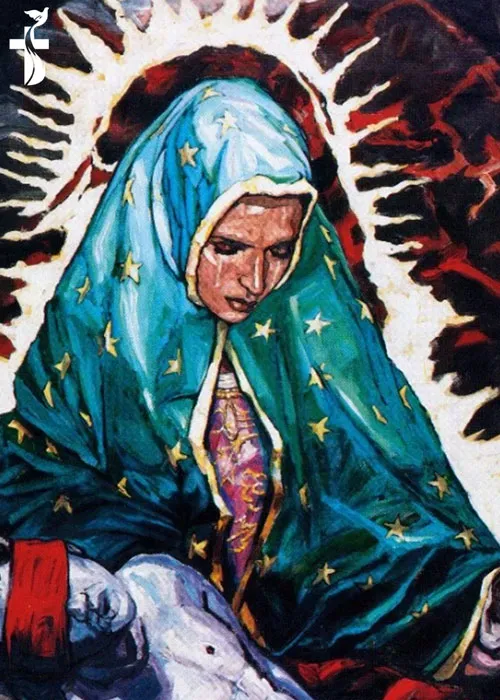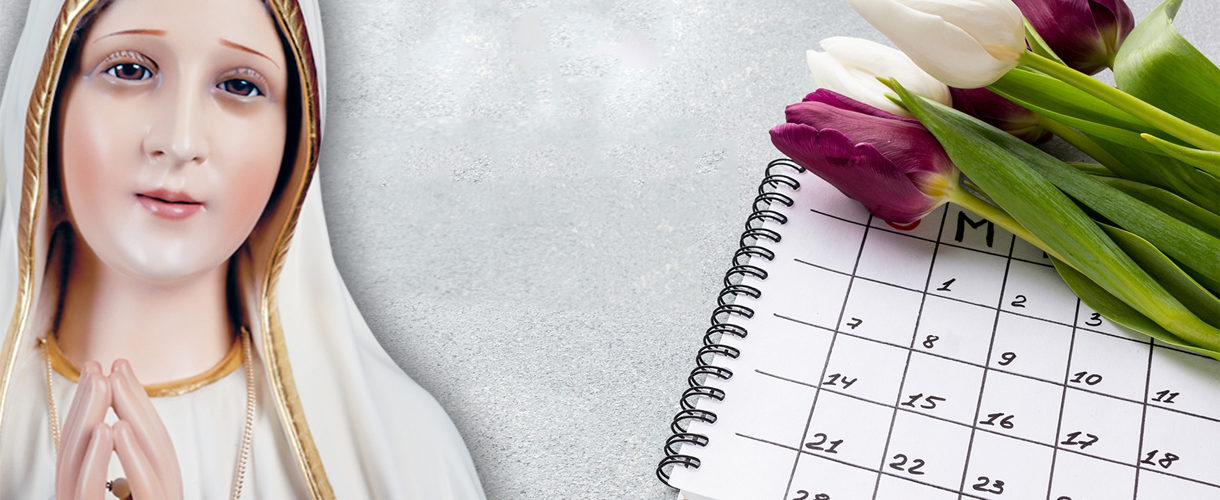
Our Lady Of Happy Assembly
Country : France
Year : 1664
Le laus (pronounced Lows) is a little village in southeastern France, 60 miles to the southeast of Grenoble. The story of Mary’s shrine there centers around a young woman named Benoite Rencurel, who was born on September 29, 1647 of humble parents in the little village of St. Etienne, not far from Le Laus. Her father died when whe was seven and after his death her mother found life rather difficult. So, when Benoite was 12, she went to work on a neighboring farm, tending the farmer’s sheep. Each day while the flock grazed she
One day, in 1664, Benoite led her little flock into a small valley near St. Etienne and there toward the end of the afternoon, a Lady and Child appeared to her, standing on top of a rock – a large rock – known locally as Les Flours. The Lady did not speak to Benoite, but smiled in a very friendly way and after a few minutes Lady and Child vanished. However, similar apparitions continued almost daily for two months. Of course, rumors of what was occurring gradually spread around the neighborhood Countryside.
Finally M. Grimaud, a district magistrate, questioned Benoite at length and suggested that if the lady appeared again, Benoite should ask her who she was. The girl agreed; on the very next day the Lady appeared, she asked her to please say who she was — was she the Mother of God? The Lady answered: “Yes, I am Mary, the Mother of Jesus. My Son wishes to be especially honored in this valley but not on this spot.” With these words she vanished. Benoite did not see her again for a few days. On September 29, While tendiing her flock at another pasture, Pindreau, a very brilliant light suddenly appeared on top of some rocks. In the center of the light stood the Blessed Virgin. She told Benoite to go to Le Laus, where she would find a little chapel, filled with a delicious perfume, and there she would also see her. Benoite soon found herself at the little chapel of Our Lady of Good Meeting or Happy Assembly (Notre-Dame de Bon Recontre) and going in where she saw the Blessed Virgin over the high altar, on which stood her image. And the Virgin said to Benoite, “On this spot I wish a church built — a privileged sanctuary, wherein many sinners will repent. Means will not be wanting, despite the poverty of the country people around.”
The news of this event soon spread; crowds came to the little chapel, which was too small to contain them. So in 1665, Msgr. Lambert, Vicar General of the Archdiocese, gave permission for a church to be built over the little chapel.
Since there was very little money available with which to hire workmen, the villagers and peasants for miles around carried the stones and built the walls aided by the many pilgrims who came to worship and remained a while to help in the building of the church.
In 1692, during an invasion by the Duke of Savoy the church was partly destroyed, but the statue of Our Lady of Happy Assembly was not damaged. The church was soon repaired and restored. In 1716 a new statue of the Virgin was carved and enshrined behind the main altar of the church. It is said that Benoite wished the new statue to be named Our Lady of Happy Assembly of Laus. The original statue was transferred to a chapel behind the main altar. In 1885 Pope Pius IX gave official recognition to the title of Our Lady of Laus of Happy Assembly, when he ordered the new statue to be solemnly crowned. Benoite Rencurel died on December 28, 1718, and was buried in a vault in front of the altar in the church at Le Laus.



